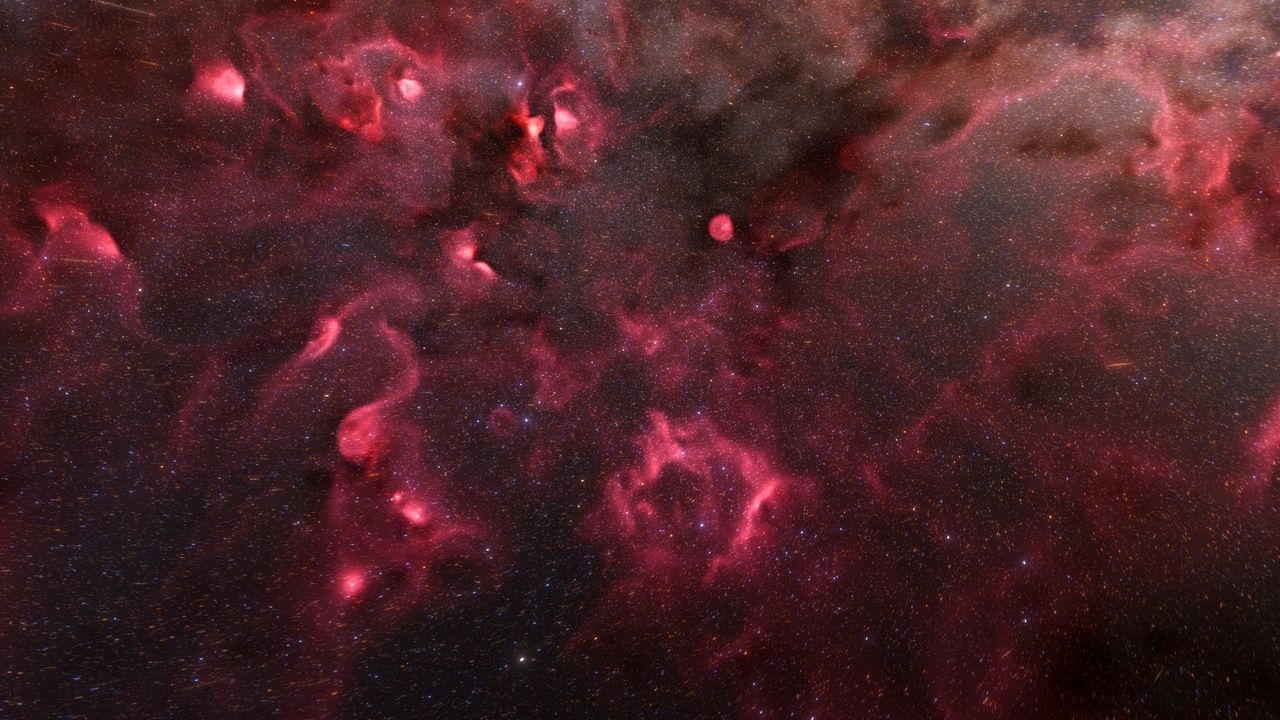
QUICK FACTS
What it is: A 3D map of where stars form in the Milky Way
Where it is: Up to 4000 light-years away, in the star-forming regions of the Milky Way
When it was shared: Sept. 16, 2025
A craggy mountain peak, a tower, perhaps even a finger — in this new celestial dreamscape from the James Webb Space Telescope (JWST), something seems to be pointing at a cluster of bright stars above, as if a stargazing session were going on deep in the Milky Way.
The orange and brown craggy peaks are huge spires of gas and dust, the European Space Agency wrote in a description of the image. The tallest, in the center of the image, is 5.4 light-years from base to tip — as wide as about 200 solar systems placed side by side out to Neptune’s orbit. Erosion within these spires is caused by powerful stellar winds and ultraviolet radiation from the massive newborn stars in the star cluster above. It’s all part of the process — as the gas is eroded and compressed by young stars’ radiation, new stars are born within the spires.
Sweeping wisps of fuchsia form an ethereal backdrop to millions of bright white pinpricks in a new image made from Gaia Space Telescope data. The glorious image is a peek into the vibrant cosmic kindergartens for newborn stars, which was previously hidden from view.
These are reddish-pink nebulas and sparkling stars in the star-forming regions of the Milky Way, made as part of the three-dimensional map of stars up to 4000 light-years from the sun.
Within the collection of 44 million “ordinary” stars Gaia captured lies 87 O-type stars — rare infant stars, which are both extremely massive and hot. They emit bright ultraviolet light that oozes so much energy that the rays blast electrons off of any hydrogen atoms they hit, ionizing them. This process creates a cloud of charged hydrogen gas around the O stars, called HII regions.
Scientists can look for patches of this ionized gas to identify where the starry seedbeds reside within the galaxy. They can also see how far the impacts of the O stars reach.
Astronomers already had a good idea of what these nurseries looked like while peering at them from Earth, but how they looked from other directions was a blindspot. Using the 1 billion pixel camera of the Gaia Space Telescope, which was launched Dec. 19, 2013 and remained operational until Jan 15, 2024, scientists made a 3D map of these regions.
Now, anyone can sweep through the Milky Way and get a glimpse of these stellar nurseries from various perspectives, the European Space Agency (ESA) wrote in a description of the image. The map includes the Gum Nebula, the North American Nebula and the California Nebula. ESA also released a video to accompany the image, showing a three-dimensional tour of the newly mapped regions.
For more sublime space images, check out our Space Photo of the Week archives.
